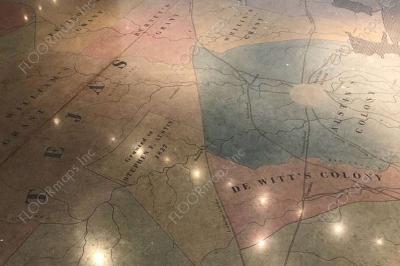Blast Resistant Material

Product Description
Blast resistant material is perfect for creating a bevelled and textured look to your design. Fill it in with color or just let the texture do the talking.
This material is a 30mil polymeric blend and handles up to 90psi which makes is ideal for blasting mediums. Its adhesive is also extremely sticky so clean rough surfaces will not pose a problem. Use it to create a design with texture, apply color to a rough surface, or both. Skies the limit!
Known Safe Products:
- Sand Blast
- Bead Blast
- Soda Blast
- Stains
- Dyes
Related Projects

See More!

See More!

See More!

See More!
Material FAQ & Information
Suggested concrete temperature to install using the High-Tack Blast resistant material is from 60-80 degrees Fahrenheit, and preferably not in direct sunlight.
NOTE: Usual times are early morning or at least 1 hour after sundown. You can use a temp reader on the concrete to find your slab’s temperature.
You can prevent adhesive buildup by installing your blast design in cooler temperatures. Heat causes the adhesive to release from the stencil which can cause build-up and/or ghosting. Installing during cooler temps can help alleviate the risk. Moisture can also affect how much adhesive will be left behind. Pro Tip: you can use wallpaper paste on the area that you plan on installing the blast material. Once the project is complete, you can use a pressure washer and/or shop broom to scrub the paste after, be careful, it can be slippery. If the slab is very new, then there is a chance that the moisture level is high. Wait at least 28 days before you lay down any stencils to prevent ghosting.
If you do encounter buildup you can use xylene or acetone with a razor blade to remove most, if not all, of the adhesive goo. Refrain from using oil-based lubricants like goof-off as it may stain the concrete. You can also use a magic eraser (found at Lowe's or Home Depot) Please make sure that you test this method in an inconspicuous area to ensure the eraser does not remove any previously applied color.
You can use a hot glue gun or duct tape to seal the seams.
Sandblasting or bead-blasting are the most commonly used products. However it is not as common, but we have seen this material used for rough surfaces for projects that required micro-topping, dyes, and stains, as well as any other abrasive medium.